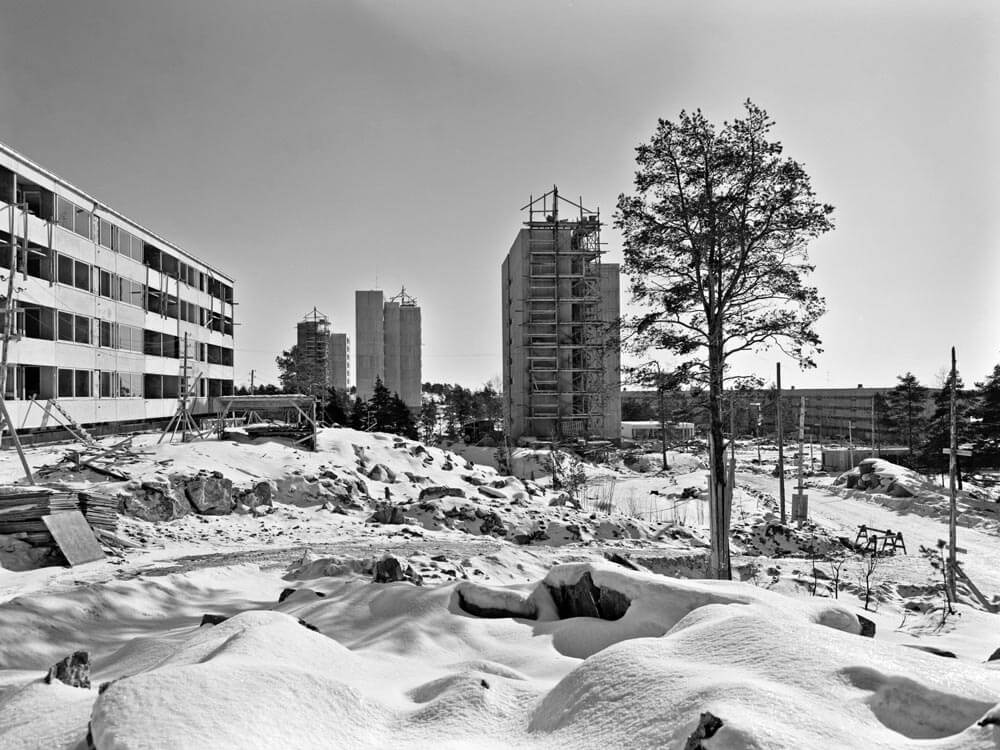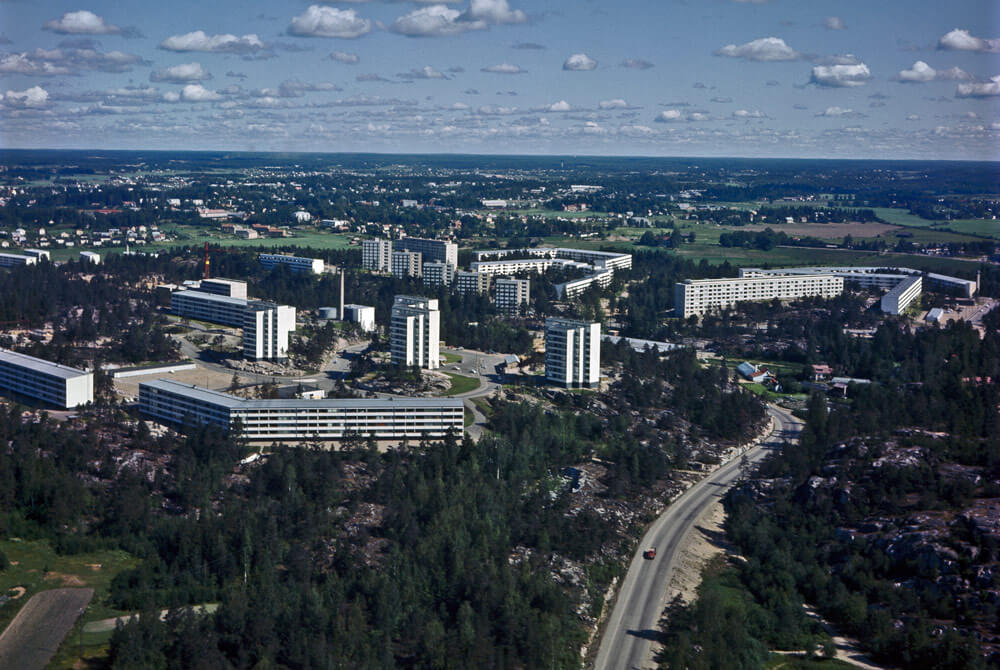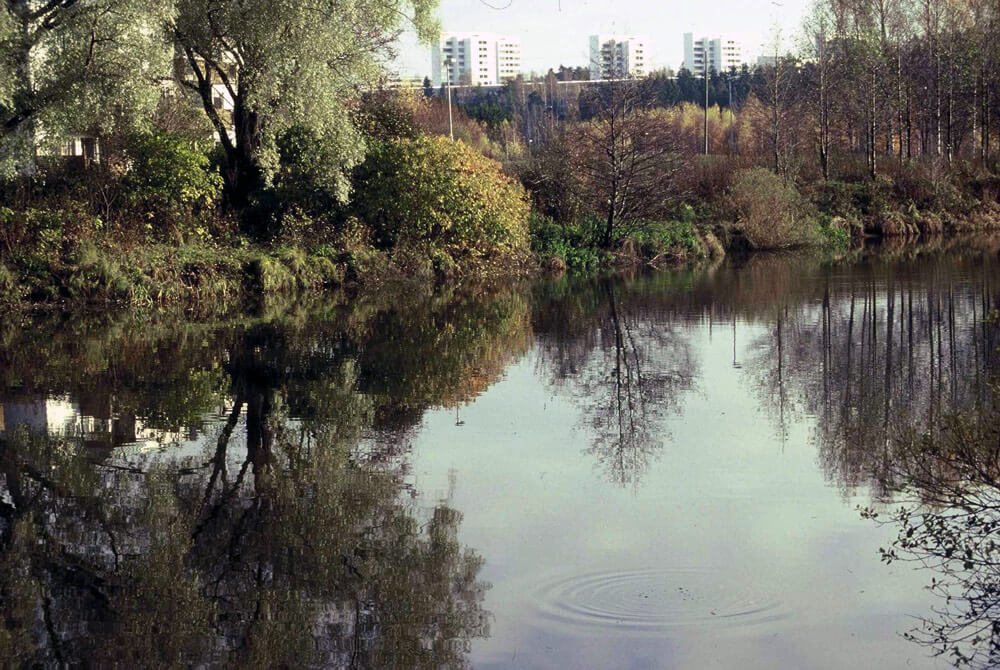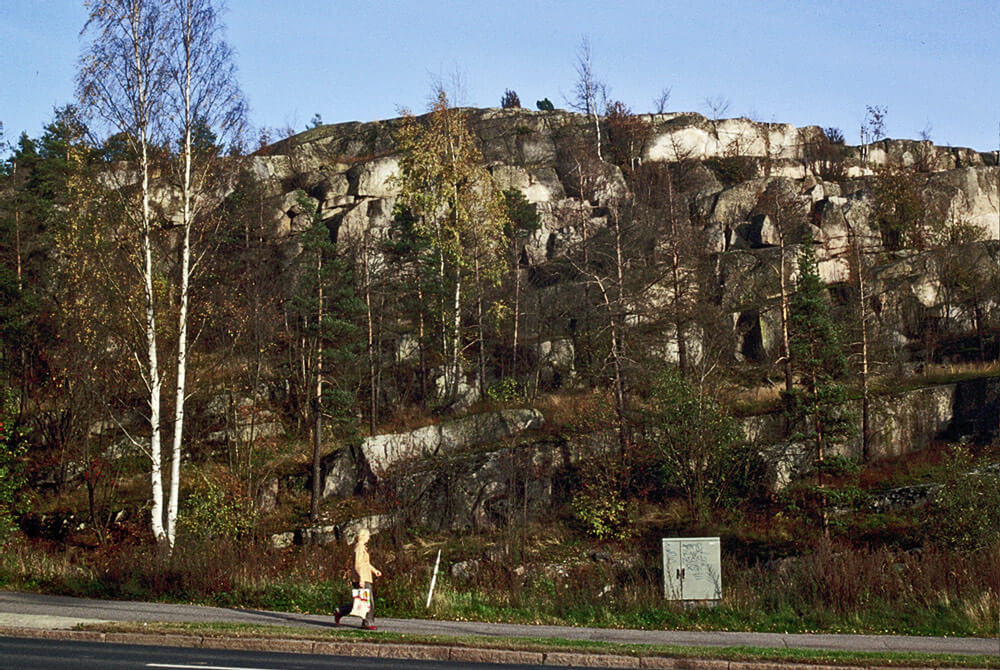The “Viikin latokartano” farm was founded on land claim from local farmers in Viikki to supply grains and feed to the royal manor of King Gustav Vasa of Sweden, the founder of Helsinki. The royal manor was subsequently destroyed by the Russians in 1571. In the 1600s and 1700s, Viikin latokartano served as the governor’s official residence. In the 1910s the small settlement of Viikinmäki was established on the manor’s land by the Vantaanjoki river.
Viikki became part of Helsinki in 1946 along with Pihlajamäki and Pihlajisto. Pihlajamäki was designed and developed primarily between 1959 and 1965 as one of the first mass production housing areas in Finland. The town plan was drawn up in 1960 by architect Olli Kivinen. To ensure political fairness, the construction of Pihlajamäki was divided between two developer organisations. The Helsinki Housing Co-operative (Helsingin Asuntokeskuskunta Haka) was assigned the construction of the area’s northeastern section under the architects Esko Korhonen and Sulo Savolainen, while Social Housing Production (Sosiaalinen asuntotuotanto Oy Sato) was responsible for the area’s southwestern part under the architect Lauri Silvennoinen. Further information about these architects is available on the Pihlajamäki Architecture Path website.




